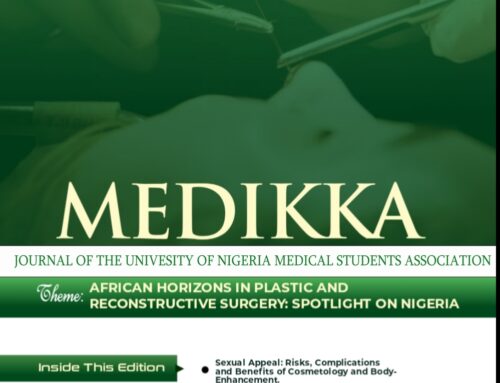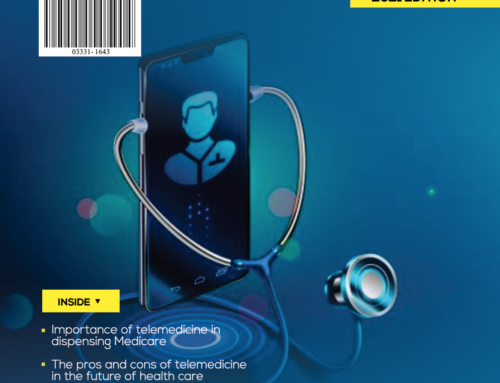managers and policy makers of the most economically viable strategies for malaria vector control in the country.Methods: The study was undertaken in Khartoum and Gezira states. However, data on costs incurred at the National level was
also collected. In-depth interviews with policy makers, household questionnaire survey and review of documents were the data
collection tools. Data was collected on financial and non-financial costs of four malaria vector control tools namely Indoor
residual house spraying (IRHS), Insecticide-treated nets (ITNs), larviciding with chemicals (LWC) and space spraying (SS) or
fogging. The main outcome measure was the relative reduction in the incidence of malaria among the under-fives, measured
from reported cases of malaria by sub-samples of respondents that consumed different vector control tools.Findings: IRHS was the most costly vector control tool while ITNs was the least costly, from the providers’ perspective. Unit
costs were 28 Dinars, 22.1 Dinars, 16.2 Dinars and 1.7 Dinars for IRHS, LWC, SS and ITNs respectively. ITNs led to a reduction of
22% of incidence rate, while IRHS led to a reduction of incidence rate by 12%. For a one percent reduction in malaria incidence
in the under fives, it will cost 0.45 Dinars using IRHS and 0.21 using ITNs in household-reported incidence of malaria in the under
five-year olds. There were high administrative costs for all vector control tools at the national and state levels.Conclusion:
There is need to reallocate funds from IRHS and SS to ITNS and cost savings from reduction in IRHS and SS activities could be
used to ensure that ITNs are distributed equitably. The administrative costs especially at the national level should be decreased
and there should be more delegation of duties to lower level of government. The efficiency of all vector control activities needs
to be improved with the first step being the better integration of the activities such as training, community mobilisation and
delivery of vector control materials.
Key words: Malaria, Sudan, Vector control, Costs, IRHS, ITNs, Larviciding, Fogging
INTRODUCTION
The prevention of malaria in Sudan is achieved through the use of many vector control tools. However, there is a general feeling
that Sudan ‘over-relies’ on unsustainable routine large-scale spraying programmes while cost-effective use of integrated vector
control has not been adequately explored (Mnzava 2002). Malaria is a major health problem in Sudan and accounts for about 21%
of all cases seen at outpatient departments and 32% of inpatient admissions in health facilities in the country (NMA, 2002).
However, a determination of the most cost-effective use of public funds for vector control activities requires a comparison of
the costs and outcomes of a broad range of vector control tools currently used in the country.
The costs and outcomes of the different tools in Sudan are unknown, meaning that their relative usefulness and contribution to
malaria control is not known. An economic analysis that would determine the costs and outcomes of the various malaria vector
control tools would be useful to show the most economically viable vector control tools. Konradsen et al (1999) undertook a
similar analysis by computing the costs of various malaria control measures in Sri Lanka and they stated that such information
can guide health planners and policy makers in choosing the most appropriate combination of control measures. Hence, the
information would provide evidence for more efficient use of funds and show the optimal mix of vector control tools that would
lead to the best malaria control outcomes in Sudan.
The nature of malaria transmission is a possible determining factor to the most cost-effective vector control measures to use in
different epidemic settings. Previous studies that have compared IRHS with ITNs in different areas found different results
(Guyatt et al., 2002a,b; Kamoratankul et al., 2001; Goodman et al., 2001; and Konradsen et al., 1999). The studies showed that
IRHS was more cost-effective in areas with seasonal malaria (Guyatt et al., 2002a,b; and Goodman et al., 2001), while ITNs were
more cost-effective in areas with all year high transmission of malaria (Kamoratankul et al., 2001; and Konradsen et al., 1999). The
vector control strategies in Sudan include annual indoor residual house spraying (IRHS), larviciding with chemicals (LWC), fogging
or space spraying (SS), environmental management and recently Insecticide treated nets (ITNs).
Guyatt et al (2002a) found that the economic cost per infection case prevented by IRS was US$ 9 compared to US$ 29 for ITNs
and hence argued that IRS may be both more effective and cheaper than ITNs in communities subjected to low, seasonal risks
of infection. Also, Goodman et al (2001) in South Africa showed that ITNs were significantly more effective in preventing malaria
cases than RHS, and also more costly, with an incremental economic cost per person of ITN compared with IRHS of R8.68
(US$1.42) per year. However, Kamoratankul et al (2001) found the opposite result in Thailand and showed that ITNs were more
cost-effective (US$1.54 per 1 case of prevented malaria) than IRHS and hence argued that their data suggest that personal
protection measures with insecticide-impregnated mosquito net are justified in their use to control malaria in highly malaria-
endemic areas in western Thailand. Also, it was found in Sri Lanka that IRHS was the most expensive while ITNs were cheaper
than IRHS to the government and that the two cheapest preventive options were larviciding and water management, but there
was no data to determine whether the two cheapest options offered comparable protection to ITNS and IRHS (Konradsen et al.,
1999).
This study provides information about the financial and non-financial costs of four malaria vector control tools in Sudan, a
country with all year high intensive transmission of malaria. This is because from literature review, the findings from one setting
may not be appropriate in another setting and more evidence-base is needed for the cost-effectiveness of different vector
control measures in different setting. Unlike previous studies (Guyatt et al., 2002; Kamoratankul et al., 2001 and Goodman et al.,
2001) that have compared the costs and outcomes of two malaria vector control tools, this study compares the costs and
outcomes of more than two vector control tools. However, Konradsen et al (1999) compared the costs of four vector control
measures as well as three malaria treatment services, although they assumed the same level of effectiveness for the seven
measures. This paper hence provides a wider framework for policymaking and information on the economics of different vector
control tools.
METHODS
Study areas
The study was undertaken at three levels of service delivery where costs were generated for malaria control activities. These
were the National level, two states (Gezira and Khartoum) and three localities from each state respectively. The localities were
an urban, a peri-urban and a rural locality, so that the costs and households will be representative of the general population.
The localities that were selected in Gezira state were Wad Medani (urban), Umra-Qura (peri-urban) and Medina Arab (rural).
Similarly, Omdurman (urban), Bahry (peri-urban) and Albuga (rural) were selected in Khartoum State. The population of the
localities in Gezira State were 284,098 in Wad Medani; 83,352 in Medina Arab; 91,837 in Umra-Qura. The population of localities in
Khartoum State: Omdurman = 255,878; Bahry = 271,246; and Albugaa = 55,345.
Data collection
The study tools for collecting data from programme managers and policy makers (providers) were an interviewer-administered
questionnaire and an in-depth survey guide, while an interviewer-administered questionnaire was used for the household survey.
All the study tools were pre-tested in Khartoum. The provider questionnaire was administered to malaria control managers at
the National, State and Locality levels. Hence, there was one interview at the national level with National RBM director, two
interviews at State level and six interviews the locality level. In addition, the in-depth interviews were held with malaria control
managers. The household questionnaire was administered to randomly selected households from the six localities. The
respondents in each household were either the household head or the spouse. However, in the event that these two people
were not around, information was collected from an available adult household member.
A sample size of 120 households was determined to be adequate for each of locality, totalling 720 households for the 6 localities.
Random sampling was used to decide on the households to collect information from. Unlike previous studies that have compared
IRHS with ITNs (Guyatt et al., 2002; Kamoratankul et al., 2001 and Goodman et al., 2001), it was impossible to stratify the
households into those receiving only ITNs versus those receiving IRHS, since both interventions are being implemented in all
areas. In addition, the households were also exposed to larviciding and fogging in all areas. These have implications for the
interpretation of the findings of the outcomes of the vector control tools. However, in the data analysis, the sample was
stratified into the households that have only ITNs, those with only IRHS, those with both and those with none. However, it is
recognised that all households equally benefited from larviciding and fogging since these were offered as pure public goods and
nobody was excluded from their consumption.
The vector control tools that were compared
Preliminary inventory of the vector control activities revealed five main approaches in the country. The five activities were IRHS,
ITNs, Larviciding with chemicals (LWC), Fogging and environmental management, with the first four being directly under the
malaria administrations. Hence, the determination of financial and non-financial costs of the activities and other points on the
TOR were focused on these four activities.
The variables
The variables from the provider interviews included the costs and outcomes of the various vector control tools. The questioning
about costs was based on all the identified activities for the vector control interventions and costs were then collected on all
cost categories. The activities ranged from procurement & storage to supervision, monitoring and evaluation. The cost
categories included personnel, transportation, supplies etc. A one-year perspective was taken in the costing, so that all the
activities will be directly comparable since serious ITNs distribution just started in the country within the past year.
The variables from the household interviews included reported household incidence of malaria in the month prior to the survey.
A one month recall time was used in order to minimise recall bias. The household incidence was rate of the under-five year olds
was used for comparing the effectiveness of the different vector control tools. The main outcome measure was the relative
reduction in the incidence of malaria among the under-fives, measured from reported cases of malaria by sub-samples of
respondents that consumed different vector control tools.
Cost analysis
Financial and non-financial providers’ costs of the vector control tools were computed. A provider’s perspective was assumed as
was done by some previous studies that compared the cost-effectiveness of IRHS and ITNs (Guyatt et al., 2002; Kamoratankul et
al., 2001 and Goodman et al., 2001). This was because as those studies found out, the costs to the communities in implementing
the interventions were negligible, as confirmed from the National RBM and during fieldwork from interviews with community
leaders. The cost of ITNs was not included as part of provider cost since people pay for them. In addition, most of the nets that
were sold to the people were donated by WHO and UNICEF to the National Malaria Administration. It was not possible to
determine the number of nets in circulation and the proportions of nets that have been distributed were subsidised. Konradsen
et al., (1999) included consumer costs of ITNs in their analysis by assuming that all individuals make use of bed-nets, which is
debatable and unrealistic.
While financial costs represent resources actually expended in the activities, non-financial costs represent the opportunity
costs of resources that were used for the activity. Adding up these two costs gave the total cost of the interventions and its
division by the total population is the unit costs or per capita costs of the interventions. All capital cost items like vehicles,
pumps and machines were annualised used a 5% annuity rate. The useful life-spans for vehicles were assumed to be 10 years,
while it was 3 years for pumps and machines. There was no need to discount recurrent costs since a one-year time perspective
was used for the costing. In determining the total costs of malaria to the localities, contributions of costs at all levels were
taken into consideration.
The cost for the whole country was first determined and because malaria activities currently cover 24 states, the unit cost to a
state was determined by assuming that each state consumed equal proportions of the national costs. The unit cost to a state
multiplied by two gave the costs to the two states for all the activities undertaken for the four vector control tools at the
national level. The cost for the whole states were first determined and then divided by 31 localities in Gezira State and 25
localities in Khartoum State to get the cost per locality, by assuming that each locality consumed equal proportions of the state
costs. The unit cost per locality multiplied by three gave the costs to three localities for all activities for the four vector
control tools at the State level. The activities were the state is involved in IRHS and LWC are similar. The final costing was at the
locality level and the contributions of costs that were generated at the national and state levels per locality were added to the
costs generated at the locality in order to arrive at the total costs at each locality. The total costs to a locality of each of the
four vector control tools divided by the population of that locality were the unit costs of each vector control tool respectively.
Analysis of outcomes
The outcome variables were reduction of malaria incidence from self-reported morbidity (measure of effectiveness) and per
capita (unit) costs of the interventions. The total costs to a locality of each of the four vector control tools divided by the
population of that locality were the unit costs of each vector control tool respectively.
During data analysis, the respondents were stratified into four groups namely: households with only ITNs, only IRHS, IRHS & ITNs
combined and no ITNs or IRHS and the outcome variables compared across the four groups. Self-reported morbidity in past one
month was used as the measure of malaria incidence. The national incidence rate of malaria was from 14% to 25% (NMA, 2002).
Therefore, the average of 19.5% was used as the base incidence level for comparing the effectiveness of the different vector
control tools. The study was constrained by resources, so more sensitive tests of malaria outcomes such as health facility
records of parasitologically confirmed cases of malaria as used by previous studies (Guyatt et al., 2002; Kamoratankul et al., 2001
and Goodman et al., 2001) were not determined. However, it is noted that a previous study that compared the costs of
different vector control tools simply assumed that they all had the same level of effectiveness (Konradsen et al., 1999).
Note: All costs are expressed in Sudanese Dinars (SD). US$1 = 270SD.
RESULTS
Providers’ costs incurred by the national level (for two states) and the contribution to costs at the locality level
Table 1 shows that at the national level, a bulk of the costs is devoted to larviciding with chemicals (LWC). The costs for indoor
residual house spraying (IRHS) and insecticide-treated nets (ITNs) are in less than 200,000 SD, while the lowest cost was for
fogging or space spraying (SS). Most of the costs were financial costs representing expenditures that were actually made.
Dividing the total costs by the number of localities that have malaria in Sudan, showed that each the costs generated at the
national that would be shared by the localities in the two states are shown in the lower split half of the Table. The computation
shows that the national level added 16,579 and 20,559 SD to the cost of vector control of malaria in each locality in Gezira and
Khartoum states, respectively.
Providers’ costs at the state level and the contribution to costs at the locality level
The costs of the activities in Gezira State and Khartoum State are presented in Table 2. The costs presented in those tables are
the costs to only 3 localities from the respective State Malaria Administrations (State malaria control departments). The cost
that the SMA contributes to each locality in Gezira State is shown in the split lowest row of Table 2. The computation shows
that the state adds 526,126 SD to the cost of vector control of malaria in each locality.
The Khartoum State Malaria administration did not undertake any IRHS-related activity in the year preceding the survey and so,
no costs were incurred. SS was the major activity undertaken by the SMA and it actually accounted for more than 90% of costs
at this level (Table 2). The table also shows that while non-financial costs accounted for about 50% of costs due to ITNs,
financial costs accounted for almost all the costs incurred for LWC and SS. Most of the money for SS went to the actual
activity, while training was the highest cost activity for LWC. The computation shows that the state adds 2,107,530 SD to the
cost of vector control of malaria in each locality.
Providers’ financial and non-financial costs at the locality level and by state
Overall, IRHS was the most expensive vector control tool that was undertaken in the two states (Table 3). However, analysing by
State, IRHS was the most expensive in Gezira only, followed by LWC there while ITNs came last. Conversely, LWC was slightly
more expensive than SS in Khartoum, while ITNs also came last here in terms of cost.
Unit costs
Table 4 presents the unit costs of each vector control tool. The general pattern noted was that while the localities in Gezira
State spent more money on IRHS, those in Khartoum State spent more money on the other three vector control tools.
However, the pattern of unit costs in Albugaa locality with a small population differed considerably from other localities in
Khartoum State.
Unlike the costs at the National level, the bulk of cost incurred at the state level was for SS and the State spent 513,375 SD in
the past year on fogging alone. The activities where Gezira state level was involved in IRHS and LWC are similar, accounting for
the similarity of their costs. In ITNs, the delivery and distribution of the nets are integrated accounting for the zero costs in
implementing the activity proper, which in the case of IRHS, would have been actual spraying of houses and for LWC, the
larviciding of water collections. Those activities are undertaken at the locality level. Like in the National level, the bulk of the
money and resources for IRHS and LWC were consumed in supervision, monitoring and evaluation. The state adds an appreciable
526,126 SD to the cost of vector control of malaria in each locality.
The Khartoum State Malaria administration did not undertake any IRHS-related activity in the year preceding the survey and so,
no costs were incurred. SS was the major activity undertaken by the SMA and it actually accounted for more than 90% of costs
at this level. Training is not integrated, thus accounting for the different training costs for the three vector control tools. The
SMA added more than 2million SD to the cost of vector control to each locality because of SS, while it added only 12,964SD
because of ITNs.
Outcome analysis:
Cost-effectiveness of ITNs versus IRHS: ITNs led to a reduction of 22% of incidence rate compared to National, while IRHS led to
a reduction of the National incidence rate by 12%. For a one percent reduction in malaria incidence in the under fives, it will
cost 0.45 Dinars using IRHS and 0.21 using ITNs, all things being equal.
DISCUSSION
Indoor residual house-spraying was the most costly vector control tool while ITNs was the least costly, from the providers’ or
public perspective. Our finding that the providers’ unit costs for IRHS was the highest followed by LWC was surprising since IRHS
only taken place in a maximum period of 4 weeks per year while LWC is all year round. The unit costs for ITNs were the lowest.
The costs of Larviciding with chemicals (LWC) and space praying (fogging) were in between those of IRHS and IRHS.
Our findings were similar to those of Konradsen et al (1999) in Sri Lanka and Kamolratanakul et al (2001) in Thailand. Konradsen
et al (1999) found that residual spraying of homes was the most expensive prevention intervention and that ITNs were cheaper
for the government. The effectiveness of IRHS and ITNs were almost equal, however, ITNs led to more reduction of household-
reported incidence of malaria in the under five-year olds. Hence, ITNs was potentially more cost-effective than IRHS from the
perspective of the provider. However, even in South Africa where it was found that ITNS were more costly than IRHS, but also
more effective, the authors recommended that in view of its greater effectiveness, policy makers may view them as a cost-
effective use of resources, even if the economic costs are higher (Goodman et al., 2001).
Our findings because of its similarity to those from areas of all year intense malaria transmission such as Thailand and Sri Lanka
(Kamolratanakul et al, 2001; Konradsen et al, 1999) and differences from those of occasional malaria transmission such as Kenyan
highlands and border areas of South Africa (Guyatt et al., 2002a,b; and Goodman et al., 2001) suggest that the nature of malaria
transmission is a very strong determinant of the cost-effectiveness of different vector control measures. Hence, the costs of
IRHS is higher where there are many houses to the sprayed all the time, while costs of ITNs are higher where the incidence of
malaria is not intense and people do not necessarily have to sleep under the ITNs all the time. Altogether, the findings from this
and other reviewed studies imply that ITNs could be better suited in areas with hyper-endemic malaria with all year transmission
of the disease, while IRHS are better suited in areas with hypo-endemic malaria with intermittent transmission of the disease.
The finding that the cost of supervision, monitoring and evaluation of the vector control was the biggest contributor to costs at
the National level for IRHS and LWC reflects the elaborate cost involvement, because the national level actually supervises down
to the locality level. It is possible that the costs could be reduced if the NMA delegates more responsibility to the State Malaria
Administrations (SMAs) or if the SMAs are empowered by the NMA to undertake some of the functions in their states. Like in the
National level, the bulk of the money and resources for IRHS and LWC in Gezira state were consumed in supervision, monitoring
and evaluation. In Gezira, this reflects the very elaborate set-up for these activities. Therefore, the manner that this activity is
undertaken should be re-examined in order to decrease cost. In Khartoum state, it could be argued that the SMA is wasting too
much funds on activities that have outcomes that cannot be quantified and that are at best, provide an inefficient use of
resources. Training is not integrated, thus accounting for the different training costs for the three vector control tools.
It was also seen that the Gezira State adds 526,126 SD to the cost of vector control of malaria in each locality and Khartoum
state adds 2 million SD to the cost of vector control to each locality because of SS, while it added only 12,964SD because of
ITNs. These costs need to be reduced or re-channelled to the localities themselves that have activities that directly impact on
the malaria control of the populace. If a widespread coverage with ITNs is achieved and the LWC is effective, the occurrence of
the emergencies that may require SS may be far and in between. The same set of people should be used for all vector control
activities and given training to improve their capacity to undertake all the activities at the same time.
It is recognised that the analysis about the comparative reduction of malaria incidence by IRHS and ITNS is flawed because of
the presence of con-founders such as LWC, space spraying, other vector control tools etc. Also, the sub-samples were not
equal as there were only 46 households with ITNs, while there were 378 with IRHS. The pooling of the data from the two States
where the predominant vector control activities are different may have also con-founded the analysis and inference. It is also
possible that the results about unit costs may vary if the consumer costs of the vector control tools are added. However, even
when the total cost to the government and households combined still made ITNs more cost-effective than ITNs in Sri Lanka
assuming two ITNs per household (Konradsen et al, 1999). Nonetheless, these factors forms the base case for future evaluations
and in the short-term is a good indicator for re-examining the vector control strategies and policies in the country.
The existence of budgetary constraints for malaria control means that programme managers should work within limits of existing
money in order to improve vector control. Hence, one argument is that there is the need to reallocate funds from IRHS and SS
to ITNS so that the funding of ITNs could be increased for scaled-up use of ITNs in the country. The use of routine space
spraying especially as undertaken by the SMA should be discontinued and the funds re-directed to ITNs and LWC. However,
because people pay for ITNs and thereby decrease the public costs on implementation of ITNS, some of the saved public funds
could be used to subsidize the price of ITNs and/or target fee exemptions to the poorest socio-economic groups so that there
would be equity in ownership and use of ITNs. Also, if ITBN are implemented, close monitoring will be required of use, re-
treatment and useful life of nets, and resistance to insecticides, to assess any change over time in relative cost-effectiveness,
and any threat to the role of the programme as a barrier to the spread of malaria transmission to other areas (Goodman et al,
2001).
Improving malaria vector control requires that funds are rationally allocated across different tools bearing in mind their relative
effectiveness in different epidemiologic settings. Hence, it will be a priority in Sudan for some funds from IRHS and SS to be re-
channelled to ITNs, in order to scale up the distribution and use of the measure in Sudan, as well as bringing its provider’s cost
and unit output to be equal with all the others. This is especially from the fact that ITNs had the lowest providers’ cost, while
IRHS had the highest provider’s cost. In addition, ITNs offer year-round protection while IRHS’s benefits are time dependent and
that of SS is questionable in the absence of epidemics. The efficiency of all vector control activities need to be improved and
the first step could be the better integration of the activities such as training, community mobilisation and delivery of control
materials.
ACKNOWLEDGEMENT
We would like to thank the following persons and organisations for their help: The staff at EMRO; Staff of the WHO office in
Khartoum, Sudan, especially Dr Mahmoud Wais, Dr Hashim, Dr Sabatinelli, Malik, Marwa and Muna.; Staff of NMA and State MA in
Gezira and Khartoum States, especially Dr Abbas and Mubarak.; Staff of Blue Nile Research Institute in Wad Medani, especially
Samia Seif, Heba, Prof Khalaffala and Mr Tarig; Our research assistants; Every other person that contributed to make this study a
success. We are grateful to Kara Hanson and Nkem Dike for their comments on the paper.
REFERENCES
1. Goodman CA, Mnzava AE, Dlamini SS, Sharp BL, Mthembu DJ, Gumede JK.
(2001). Comparison of the cost and cost-effectiveness of insecticide-treated bed nets and residual house-spraying in KwaZulu-
Natal, South Africa. Tropical Medicine and International Health 6(4):280-295.
2. Guyatt HL, Corlett SK, Robinson TP, Ochola SA, Snow RW (2002a). Malaria prevention in highland Kenya: indoor residual
house-spraying vs. insecticide-treated bednets. Tropical Medicine and International Health 7(4):298-303.
3. Guyatt HL, Kinnear J, Burini M, Snow RW. (2002b). A comparative cost analysis of insecticide-treated nets and indoor
residual spraying in highland Kenya. Health Policy and Planning 17(2):144-153.
4. Kamolratanakul P, Butraporn P, Prasittisuk M, Prasittisuk C, Indaratna K (2001). Cost-effectiveness and sustainability of
lambdacyhalothrin-treated mosquito nets in comparison to DDT spraying for malaria control in Western Thailand. American
Journal of Tropical Medicine and Hygiene 65(4):279-284.
5. Konradsen P, Steele P, Perera D, van der Hoek W, Amerasinghe PH and Amerasinghe FP (1999). Cost of malaria control in
Sri Lanka. Bulletin of the World Health Organisation, 77(4): 301 – 309.
6. Mnzava Abraham (2002). Re-orientation of malaria vector control activities in Khartoum and Gezira States, Sudan.
Technical Report. World Health Organisation, Eastern Mediterranean Regional Office (EMRO); Cairo, Egypt.
7. National Malaria Administration
FMOH, Khartoum.







